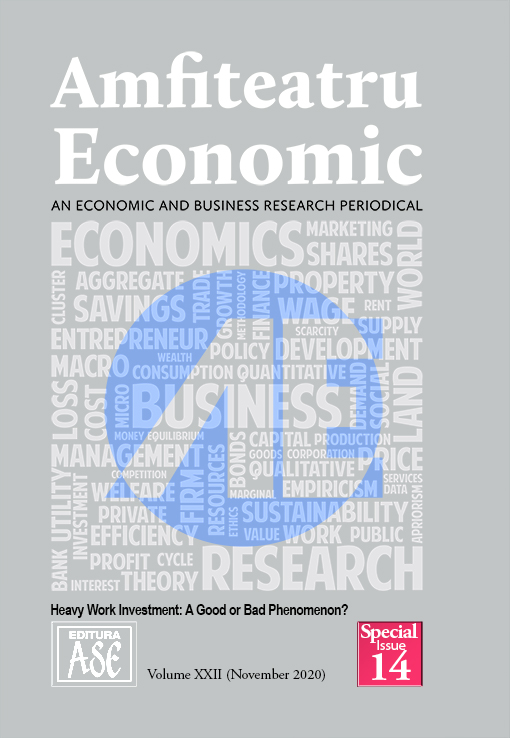Student Heavy Work Investment, Burnout, and Their Antecedents: The Case of Serbia
Student Heavy Work Investment, Burnout, and Their Antecedents: The Case of Serbia
Author(s): Sonja Ivancevic, Tatjana Ivanovic, Milica Maričić, Mladen CudanovSubject(s): Human Resources in Economy
Published by: EDITURA ASE
Keywords: HWI; burnout; work engagement; work investment; time commitment; student
Summary/Abstract: The objective of this study is to propose a model including antecedents of student Heavy Work Investment (HWI) and burnout based on the model developed by Snir and Harpaz (2012). Our data source was the survey of 1,640 students of the University of Belgrade. Student HWI is evaluated through its two dimensions, time commitment and work intensity, and student burnout through its four dimensions: personal, studies-related, teachers-related and colleagues-related burnout. The antecedents or predictor variables are chosen in the wake of prior research, being categorised into three groups – internal/dispositional (student work engagement), external/situational (perceived course load, tuition payment source and achievement-related family pressure) and background (gender). The effect of HWI on student burnout is also examined. Our results are synthesized in a holistic model showing the direct effect of HWI-TC (time commitment) on HWI-WI (work intensity). Tuition payment source is shown to be the only common predictor for all the examined constructs, and HWI is shown to have negative consequences on all four dimensions of burnout. Eight model validity indices confirm the validity of the proposed model. In conclusion, our results can be used to develop the academic programmes with optimal estimated work investment, diminishing the chance of student burnout by calibrating work intensity and work engagement.
Journal: Amfiteatru Economic
- Issue Year: 22/2020
- Issue No: SI 14
- Page Range: 1182-1205
- Page Count: 24
- Language: English

